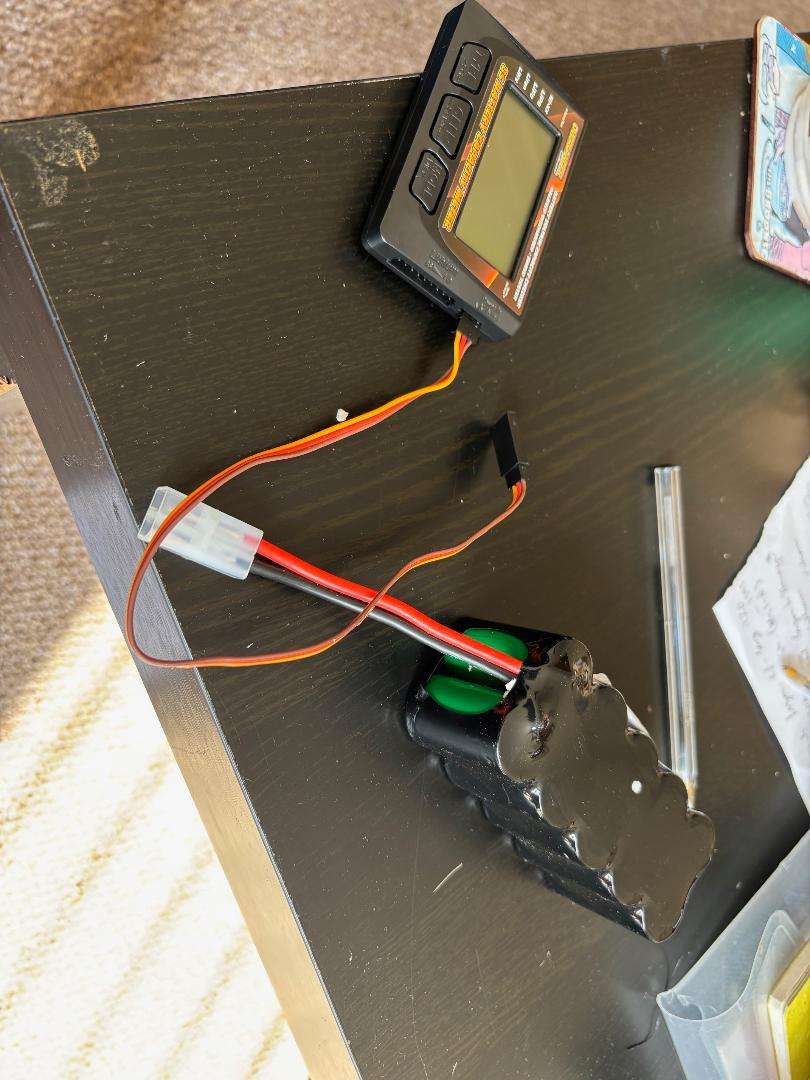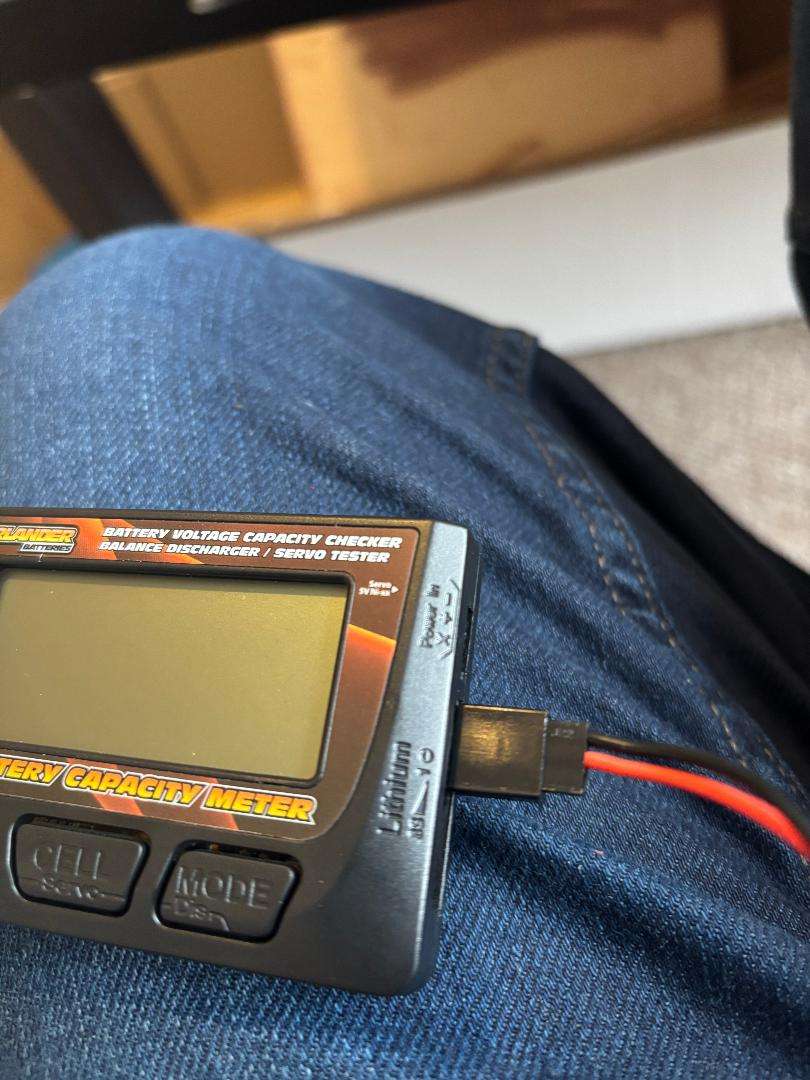Richard is right in that you need a fully charged battery and an understanding of how many amp hours it can hold and consequently how long it can run the boat for. These meters can basically only measure the battery voltage to give an indication of the state of charge. This is critical when it comes to LiPos but the NiMH batteries have a very flat discharge profile so the meter will show whether it is fully charged or discharged from the voltage but are not much use in telling you anything in between. With NiMH cells, charge them up the night before and then if they are in good condition they will deliver most of their normal capacity.
Just out of interest, I recently replaced my car battery. It would still start the car OK but the stop start function was taking longer to kick in which suggested that it was getting a bit marginal. I did a resting voltage test which confirmed this as it was down to 12.4v as opposed to the recommended 12.7v. I have a holiday coming up where the car will spend a week at the airport. On my car, as on most modern ones, if the car doesn’t like the battery voltage it refuses to crank the engine unlike older vehicles when you used to be able to keep cranking until the battery was dead.
At nearly 8 years old, it is doubtful if the battery would have lasted through another winter, quite apart from the airport risk, so the obvious solution was to replace it. £240, but better safe than sorry and I’ve had my money’s worth out of it as the usual battery life is quoted as 3-5 years.
Colin
 Chris Fellows.
Chris Fellows.





